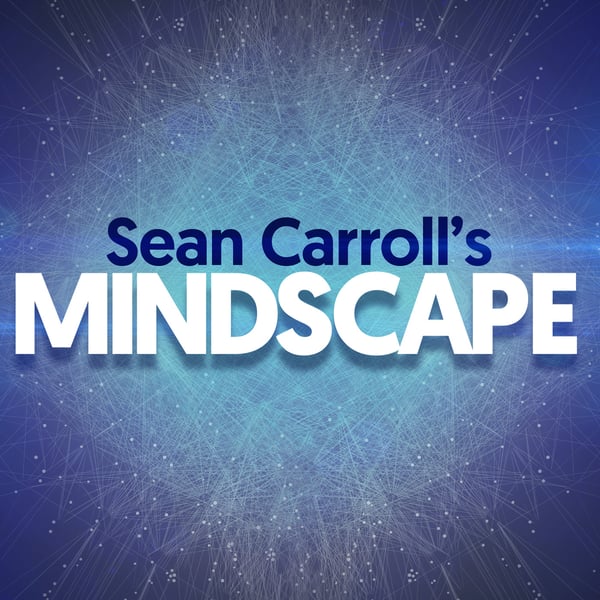96 | Lina Necib on What and Where the Dark Matter Is
Sean Carroll's Mindscape: Science, Society, Philosophy, Culture, Arts, and Ideas
Sean Carroll | Wondery
4.8 • 4.4K Ratings
🗓️ 11 May 2020
⏱️ 82 minutes
🧾️ Download transcript
Summary
The past few centuries of scientific progress have displaced humanity from the center of it all: the Earth is not at the middle of the Solar System, the Sun is but one star in a large galaxy, there are trillions of galaxies, and so on. Now we know that we’re not even made of the same stuff as most of the universe; for every amount of ordinary atoms and other known particles, there is five times as much dark matter, some kind of stuff we haven’t identified in laboratory experiments. But we do know a great deal about the behavior of dark matter. I talk with Lina Necib about why we think there’s dark matter, what it might be, and how it’s distributed in the galaxy. The latter question has seen enormous recent progress, especially from high-precision measurements of the distribution of stars in the Milky Way.
Support Mindscape on Patreon.
Lina Necib received her Ph.D. in physics from the Massachusetts Institute of Technology. She is currently a Sherman Fairchild Postdoctoral Scholar in Theoretical Physics at Caltech, and will be an Assistant Professor of Physics at MIT starting in the fall. Her research spans issues in particle physics and astrophysics, especially concerning the nature and distribution of dark matter, as well as techniques for detecting it and constraining its properties.
- Web page
- Inspire publications
- Google Scholar publications
- Talk on Dark Matter in the Age of Gaia
- Gaia home page
See Privacy Policy at https://art19.com/privacy and California Privacy Notice at https://art19.com/privacy#do-not-sell-my-info.
Transcript
Click on a timestamp to play from that location
| 0:00.0 | Hello everyone, welcome to the Minescape Podcast. I'm your host Sean Carroll. |
| 0:04.6 | As many of you doubtless know, in the 1990s, especially near the end of the decade, the |
| 0:08.9 | very last years of the 20th century, cosmologists began to put together a picture of the inventory |
| 0:15.4 | of what our universe is made of. It's a weird answer that science is giving us whereby |
| 0:21.0 | only 5% of the stuff in the universe by energy is ordinary matter, by which we mean all |
| 0:28.1 | of the atoms, all the particles we've ever detected in particle accelerators or any |
| 0:33.5 | other experiment, that kind of stuff, which includes all the galaxies that you see, all |
| 0:39.3 | the light that you see from stars and planets and so forth, it all adds up to only 5% of |
| 0:44.8 | the stuff in the universe. Another 25% is something called dark matter, which we think |
| 0:50.1 | is some kind of particle that we just don't see, and the other 70% is something called |
| 0:54.9 | dark energy, which might be the energy of empty space itself. Now I know to a lot of people |
| 1:00.4 | who are not professional astronomers or cosmologists, this dark stuff, this 95% of the |
| 1:06.2 | universe, seems like some kind of fudge factor, just a recognition that astronomers don't |
| 1:11.9 | understand what the universe is doing. But in fact, these are testable hypotheses, and |
| 1:17.1 | over the last couple decades, astronomers have been increasing the precision with which |
| 1:21.8 | we can test and talk about dark matter in particular to enormous accuracy. So in fact, |
| 1:28.2 | the life of a real astronomer is not spent thinking about is there dark matter or isn't |
| 1:32.7 | there, but we can actually map out where the dark matter seems to be, how it's acting, |
| 1:38.5 | how it's interacting with other kinds of particles, both dark matter and ordinary matter, |
| 1:43.0 | how dark matter can influence the formation of stars and galaxies and even more. So today's |
| 1:48.3 | podcast guest is Lena Naseeb. She is currently, I think currently, a postdoc here at Caltech, |
| 1:55.2 | my home institution, and the fall she's going to start a job at MIT as a new faculty member |
... |
Please login to see the full transcript.
Disclaimer: The podcast and artwork embedded on this page are from Sean Carroll | Wondery, and are the property of its owner and not affiliated with or endorsed by Tapesearch.
Generated transcripts are the property of Sean Carroll | Wondery and are distributed freely under the Fair Use doctrine. Transcripts generated by Tapesearch are not guaranteed to be accurate.
Copyright © Tapesearch 2025.

